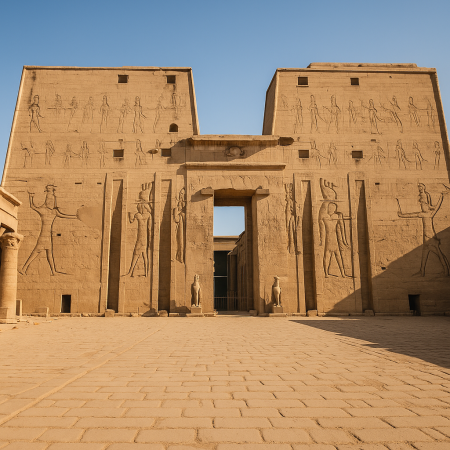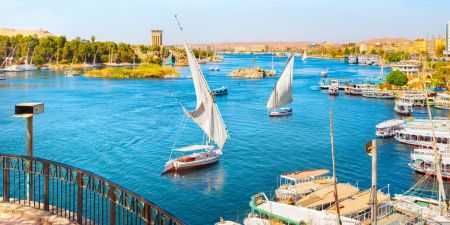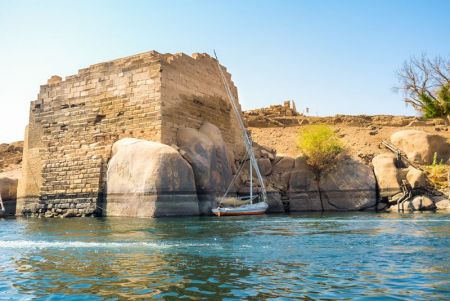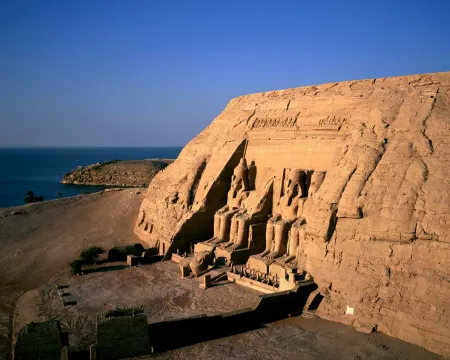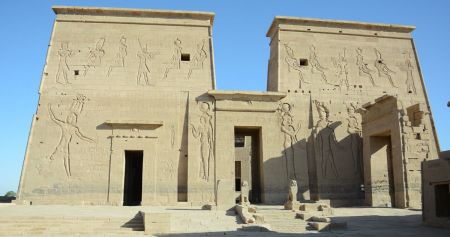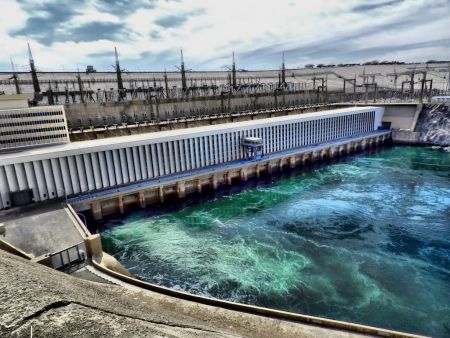Lake Nasser: Africa’s Vast Desert Reservoir

Introduction to Lake Nasser in Africa
Stretching across southern Egypt and northern Sudan, Lake Nasser is one of the largest man-made lakes in the world and an iconic African waterbody that reshaped the landscape and livelihoods of millions. Created in the 1960s as part of the Aswan High Dam project, this massive reservoir plays a critical role in Egypt’s water storage, hydroelectric power, and agriculture. But Lake Nasser isn’t just an engineering feat—it’s also a serene destination for eco-tourism, Nile cruises, desert exploration, and fishing adventures.
Named after Egypt’s former president Gamal Abdel Nasser, the lake covers a staggering 5,250 square kilometers (over 2,000 square miles) in Egypt alone, with the rest extending into Sudan, where it is known as Lake Nubia. Its existence changed the fate of Nubian communities, submerged ancient archaeological sites, and gave rise to daring UNESCO rescue missions like the relocation of Abu Simbel Temple.
Today, Lake Nasser stands as a symbol of ambition, resilience, and natural beauty. Whether you're marveling at crocodiles basking on its shores, cruising between sandstone cliffs, or casting a line for Nile perch, the lake offers a unique blend of engineering marvel and wilderness escape.
Formation and Construction of Lake Nasser
The Aswan High Dam Project
Lake Nasser was born out of necessity. Egypt has long depended on the Nile for its survival, but seasonal flooding and unpredictable water supply threatened agriculture and development. In the 1950s, under President Nasser, Egypt partnered with the Soviet Union to build the Aswan High Dam, one of the most ambitious infrastructure projects of the 20th century.
Completed in 1970, the dam controlled the Nile’s flow, generated hydroelectric power, and provided a year-round water source. As the dam blocked the Nile’s natural course, a vast body of water slowly formed behind it—Lake Nasser. It took nearly a decade to fill.
Scale and Statistics
-
Length: Over 500 kilometers (310 miles)
-
Width: Up to 35 kilometers (22 miles)
-
Surface Area: Around 5,250 km² in Egypt
-
Maximum Depth: Around 180 meters (590 feet)
-
Total Volume: Approx. 132 cubic kilometers
Lake Nasser is one of Africa’s largest reservoirs, rivaling Lake Volta in Ghana and Kariba in Zambia/Zimbabwe.
Lake Nasser's Environmental and Cultural Impact
The Displacement of Nubians
The creation of Lake Nasser came at a human cost. Over 100,000 Nubians were forced to relocate from their ancestral lands, which were submerged beneath the rising waters. Entire villages, cultural landmarks, and farming areas vanished. Although Nubians were resettled in new communities near Aswan, the loss of homeland continues to resonate today.
Archaeological Rescue Missions
The lake’s formation also threatened priceless ancient monuments. In a race against time, UNESCO launched one of the world’s greatest heritage preservation efforts:
-
Abu Simbel Temples: Moved block by block to higher ground
-
Philae Temple: Relocated to Agilkia Island
-
Kalabsha, Amada, and Wadi Sebua: Saved and reconstructed
These operations not only preserved Egypt’s cultural heritage but also spotlighted the global importance of protecting history during development.
Lake Nasser as a Tourist Destination
Lake Nasser Cruises
Lake Nasser cruises offer a peaceful, uncrowded alternative to the traditional Nile cruise. These multi-day journeys between Aswan and Abu Simbel glide through dramatic desert scenery, temple ruins, and bird-filled skies. Most cruises include visits to:
-
Amada Temple
-
Wadi El Sebua Temple
-
Kalabsha Temple
-
Qasr Ibrim (viewed from the boat)
-
Abu Simbel (the crown jewel of any cruise)
Luxury vessels provide all-inclusive comfort with guided tours, sun decks, and panoramic views of Egypt’s untamed south.
Wildlife and Nature
Despite its desert surroundings, Lake Nasser supports a surprising amount of wildlife. It’s home to:
-
Nile crocodiles: Some of the largest populations in Egypt
-
Monitor lizards and turtles
-
Over 100 bird species: Including herons, egrets, and ospreys
-
Wild desert foxes and gazelles nearby
Birdwatchers and photographers flock to the lake’s quieter shores for unspoiled natural encounters.
Fishing Adventures
Lake Nasser is a world-class fishing destination, known especially for:
-
Nile perch: Some weighing over 100 kilograms
-
Tigerfish
-
Catfish
-
Tilapia
Fishing safaris attract anglers from across the globe, with experienced local guides offering multi-day expeditions and catch-and-release practices to protect the ecosystem.
Geography and Strategic Location
Bordering Two Nations
Lake Nasser straddles two countries—Egypt and Sudan. While the Egyptian section holds most of the infrastructure and tourism activity, Sudan’s portion, Lake Nubia, is largely undeveloped. The lake’s geography offers both challenges and opportunities for international cooperation on water management and conservation.
Importance to Egypt’s Agriculture and Economy
Lake Nasser acts as a giant water bank, supplying irrigation and domestic use for millions of Egyptians. The stored water supports large-scale farming projects in Upper Egypt, including newly reclaimed desert lands. Its hydroelectric power plant at the Aswan High Dam generates a significant portion of Egypt’s electricity.
Visiting Lake Nasser: Travel Tips
How to Get There
-
By air: Fly into Aswan International Airport
-
By road: Travel from Aswan to Abu Simbel (~280 km)
-
By boat: Lake Nasser cruise from Aswan or Abu Simbel
Best Time to Visit
The ideal months are October to April, when the weather is cooler and more comfortable for cruising and sightseeing. Summer temperatures can exceed 45°C (113°F), limiting outdoor activities.
Accommodation Options
-
Cruise ships: Comfortable cabins, all meals, and guided tours
-
Lakeside lodges and eco-resorts: Around Abu Simbel or Toshka
-
Camping: For the adventurous, desert camping with local guides is possible
The Future of Lake Nasser: Challenges and Opportunities
Climate and Water Management
As climate change alters rainfall and Nile flow patterns, Lake Nasser’s role in regional water security becomes even more crucial. Egypt continues to invest in advanced water conservation, desalinization, and sustainable farming around the lake’s basin.
Eco-Tourism and Conservation
Efforts are underway to promote eco-tourism while protecting the fragile desert environment. Sustainable fishing, wildlife protection, and community-based tourism initiatives aim to balance development with ecological integrity.
FAQs About Lake Nasser in Africa
Where is Lake Nasser located?
Lake Nasser is located in southern Egypt and northern Sudan. In Sudan, it's referred to as Lake Nubia.
How was Lake Nasser formed?
It was formed after the construction of the Aswan High Dam in the 1960s, which blocked the Nile River and created a massive reservoir.
Can you visit Lake Nasser as a tourist?
Yes. Lake Nasser cruises, fishing trips, and visits to temples like Abu Simbel are popular tourist activities.
What is Lake Nasser known for?
It’s known for its immense size, rich fishing grounds, ancient temples, crocodiles, and its role in Egypt’s water storage and hydroelectric power.
Is there wildlife in Lake Nasser?
Yes. Nile crocodiles, numerous bird species, and various fish thrive in and around the lake.
Why is it called Lake Nasser?
It’s named after Gamal Abdel Nasser, the Egyptian president who led the dam project.
Final Thoughts: Lake Nasser—A Modern Marvel in the Heart of Ancient Lands
Lake Nasser is more than a vast body of water—it's a symbol of modern Egypt’s dreams, sacrifices, and progress. From ancient temples saved from submersion to vibrant ecosystems thriving in the desert, this reservoir reflects the intersection of past glory and future potential. Whether you're an angler, explorer, historian, or traveler seeking solitude, Lake Nasser offers an unforgettable experience deep in the heart of Africa.



